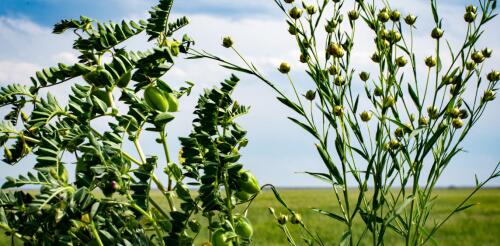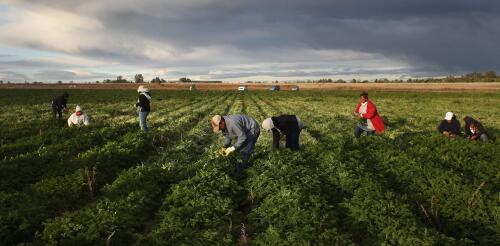US agriculture
Recent reports that the H5N1 avian flu virus has been found in cow’s milk have raised questions about whether the U.S. milk supply is safe to drink. According to the federal Food and Drug Administration, the answer is yes, as long as the milk is pasteurized. Nonetheless, raw (unpasteurized) milk sales are up, despite health experts’ warning that raw milk could contain high levels of the virus, along with many other pathogens. As an extension food scientist in a state where raw milk sales are legal, I provide technical support to help processors produce high-quality, safe dairy foods. I also like to help people understand the confusing world of pasteurization methods on their milk labels, and why experts strongly discourage consuming raw milk and products made from it. What can make milk unsafe Dairy products, like many foods, have inherent risks that can cause a variety of illnesses and even death. Our milk comes from animals that graze outdoors and live in bar...
Bees help pollinate over a third of the world’s crops, contributing an estimated US$235 billion to $577 billion in value to global agriculture. They also face a myriad of stresses, including pathogens and parasites, loss of suitable food sources and habitat, air pollution and climate-driven weather extremes. A recent study has identified another important but understudied pressure on bees: “inert” ingredients in pesticides. All pesticide products in the U.S. contain active and inert ingredients. Active ingredients are designed to kill or control a specific insect, weed or fungus and are listed on product labels. All other ingredients – emulsifiers, solvents, carriers, aerosol propellants, fragrances, dyes and such – are considered inert. The new study exposed honeybees to two treatments: the isolated active ingredients in the fungicide Pristine, which is used to control fungal diseases in almonds and other crops, and the whole Pristine formulation...
Humans have physically reconfigured half of the world’s land to grow just eight staple crops: maize (corn), soy, wheat, rice, cassava, sorghum, sweet potato and potato. They account for the vast majority of calories that people around the world consume. As global population rises, there’s pressure to expand production even further. Many experts argue that further expanding modern industrialized agriculture – which relies heavily on synthetic fertilizer, chemical pesticides and high-yield seeds – isn’t the right way to feed a growing world population. In their view, this approach isn’t sustainable ecologically or economically, and farmers and scientists alike feel trapped within this system. Corn’s evolution into a global commodity shows how industrialized agriculture has transformed farming. How can societies develop a food system that meets their needs and is also more healthy and diverse? It has p...
Television crime shows often are set in cities, but in its third season, ABC’s “American Crime” took a different tack. It opened on a tomato farm in North Carolina, where it showed a young woman being brutally raped in a field by her supervisor. “People die all the time on that farm. Nobody cares. Women get raped, regular,” another character tells a police interrogator. The show’s writers did their research. Studies show that 80% of Mexican and Mexican American women farmworkers in the U.S. have experienced some form of sexual harassment at work. Rape is common enough for some to nickname their workplace the “fields of panties.” For comparison, about 38% of women in the U.S. report experiencing some kind of workplace sexual harassment. In a recent report, the U.N. Food and Agriculture Organization called for transformative changes to the formal and informal social systems that disempower women who work on farms and in the food s...
The 2023 Georgia peach harvest is looking bad, although the details are sketchy. By some accounts, it’s the worst since 1955. Or maybe since 2017. There are estimates that a mild winter and late spring frost have cost Georgia growers 50% of their crop. Or perhaps 60%, or 85% to 95%. Consumers, say the growers, should expect less fruit, though what’s produced may be “fantastic and huge and sweet.” And they should expect to pay quite a bit more. As ominous as this may sound, the unpredictability of Georgia’s peach harvest has been predictable since the industry’s earliest days. So has public hand-wringing about it. It can be hard to say what a “normal” year is. In 1909, growers produced just over 826,000 bushels. In 1919, it was up to 3.5 million, then 4.4 million in 1924, then back down to 1 million in 1929. There may be plenty of peaches on Georgia license plates, but according to the University of Georgia’s 2021 Georgia Fa...




